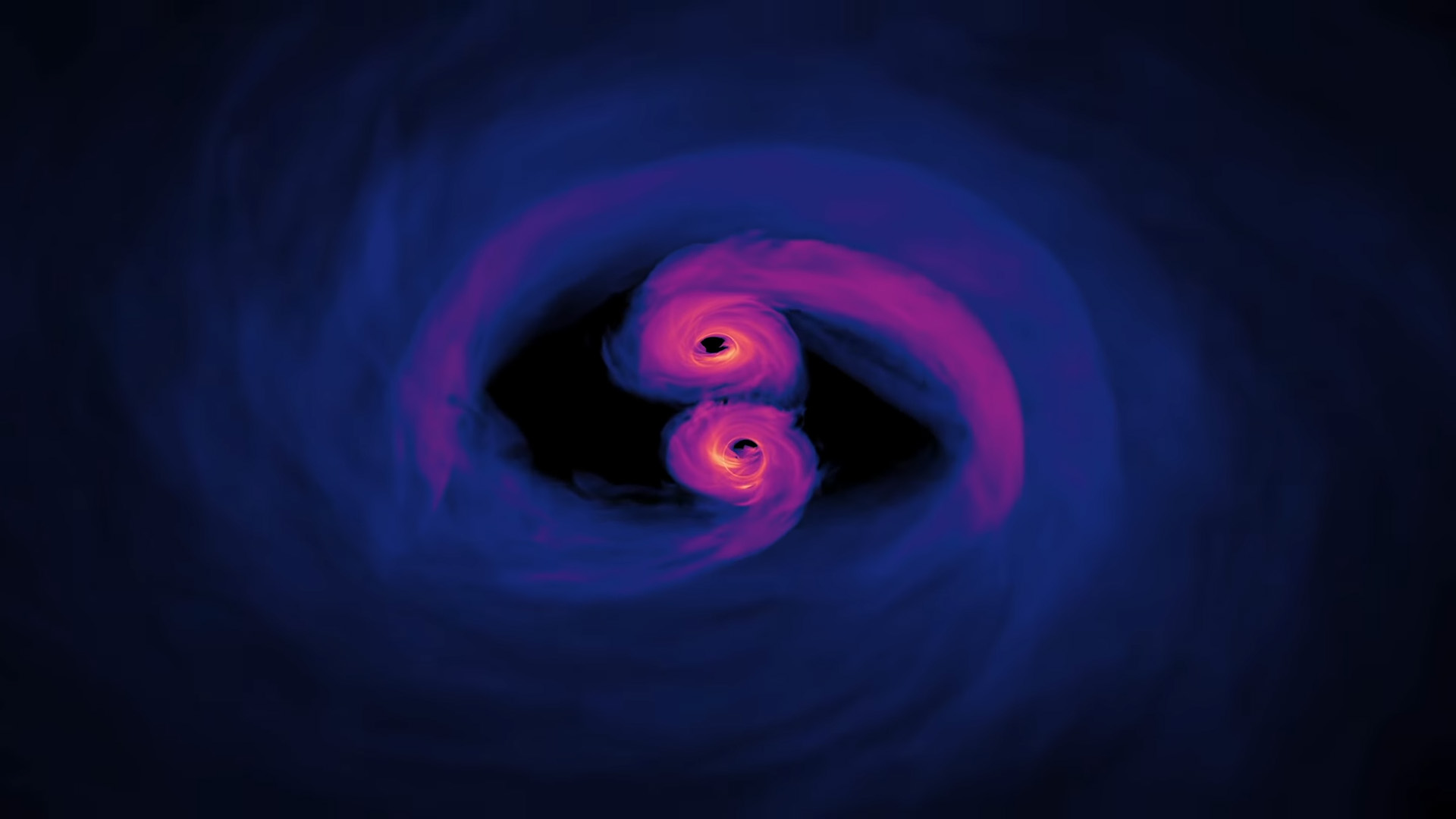You might think of supermassive black holes as the center point of a galaxy that holds everything together. After all, these cosmic forces of nature emit some of the most powerful gravitational pulls that humanity has ever studied. But what if humanity managed to find a rogue supermassive black hole? One that had left its old galaxy behind and was now sprinting through the interstellar medium?
While the idea might seem like science fiction, that’s exactly what scientists believe has happened in a dwarf galaxy located 7.5 billion light-years from Earth. They think that a now rogue supermassive black hole originated from this galaxy, kicked out of its original location after a galactic merger brought two supermassive black holes too close together.
It’s an intriguing discovery and one that I’ve covered here on the site before. What we haven’t talked about is what it takes to make a rogue supermassive black hole. How exactly does a black hole get enough momentum to be kicked out of its home galaxy? A group of researchers broke down the discovery in a pre-published paper currently available on arXiv.

When galaxies of a certain size merge, they will likely each have their own supermassive black hole. As such, the black holes then meet at some point. Usually, these black holes will be drawn to each other, orbiting each other, and sometimes the black holes will merge themselves. When they get close, the remnant black hole typically gets a kick equal to the speed Earth orbits our Sun.
Typically, that speed isn’t enough to break the supermassive black hole from its orbit and send it running into interstellar space. Normally, mergers cause a kick of tens of kilometers to hit the remnant black hole, causing a very small change in its position. But, if the right conditions are met, that kick can be turned into a super kick, creating a rogue supermassive black hole that is ejected from its home galaxy.
Instead of those typical tens of kilometers, the remnant black hole is hit with a force that moves it at thousands of kilometers a second, around one to two percent of the speed of light. At that speed, the rogue supermassive black hole could more than escape the gravity of its home galaxy.
What’s even more terrifying about this is that scientists believe there could be upwards of 500,000 rogue supermassive black holes spiraling through interstellar space, ejected from their homes. OF course, this number is all theoretical, and more discoveries of these runaway black holes could help solidify the data that we have to work with.
The post Hubble spotted a runaway supermassive black hole for the first time ever appeared first on BGR.
Today's Top Deals
- This $16 clip-on lens kit fits the iPhone or any Android phone, and it’s awesome
- Amazon deal offers a 7-inch Android tablet for under $43
- Save 61% on a 6-port USB rapid charger on Amazon
- Save 75% on a Canon black and white multifunction laser printer on Amazon
Hubble spotted a runaway supermassive black hole for the first time ever originally appeared on BGR.com on Wed, 22 Mar 2023 at 20:31:00 EDT. Please see our terms for use of feeds.

